The conquest of Granada - the last point of the Reconquista
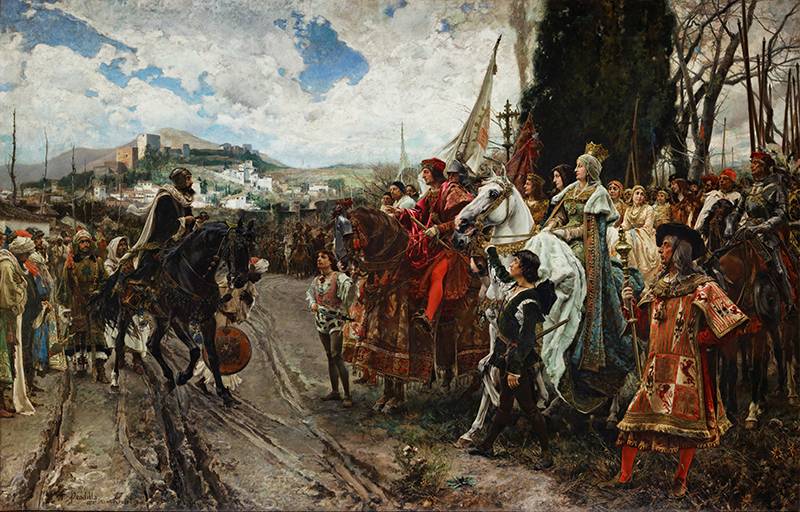
Full of sincere triumph, the triumphal procession entered the conquered city, surrendered to the mercy of the winners. Pipes and drums drove away with pompous thunder the eastern tranquility of the streets, heralds were torn, the wind rinsed the banners with the arms of houses, generations of which served as the reconquestists who seemed to be the eternal work of the sword. Their August Majesties King Ferdinand and Queen Isabella finally deigned to honor their recent acquisition with their presence. Granada was the last bastion of Islam on the Iberian Peninsula, and now the horseshoes of the monarch’s horses gracefully clicked on it. They indefatigably dreamed about this event, waited patiently for it, guessed about it and, undoubtedly, predicted for infinitely long seven hundred years. Finally, a crescent, weary of the suddenly useless struggle, rolled down Gibraltar into the North African deserts, giving way to the cross. There was plenty in Granada historical moment: the joy and pride of the winners, the grief and confusion of the vanquished. Gradually and leisurely, like the royal banner over the Alhambra, the page of history turned upside down, heavy with blood and broken iron. It was January 1492 from the Nativity of Christ.
Sunrise and sunset
The Arab conquests of the 7th – 8th centuries were large-scale in their political and territorial results. Under the rule of powerful caliphs were huge territories from the Persian Gulf to the Atlantic coast. A number of states, such as the Sasanian Empire, were simply destroyed. The once mighty Byzantine Empire was deprived of rich Middle Eastern and North African provinces. Reaching the Atlantic, a wave of Arab onslaught spilled out onto the Iberian Peninsula and covered it. In the VIII century, newcomers from the Middle East easily crushed the loose state of the Visigoths and reached the Pyrenees. The remains of the West Goth nobles, who did not want to submit to the invaders, retreated to the mountainous regions of Asturias, where they formed in 718 a kingdom of the same name headed by the newly elected King Pelayo. An Arabian punitive detachment sent to pacify the recalcitrant in 722 was lured to the gorge and destroyed. This event was the beginning of a long process that went down in history as a reconquista.
Further advance of the Arabs to Europe was stopped at 732 during Poitiers, where the Frankish king Karl Martell put an end to eastern expansion to Europe. The wave ran into a barrier, which she was no longer able to overcome, and she rushed back to the land of Spain. The confrontation of the small Christian kingdoms, behind which were only mountains, the Bay of Biscay and persistent confidence in the correctness of their actions, and the Arab rulers, under whose control by the beginning of the 9th century there was a large part of the peninsula, seemed like a grueling positional war.
Soon after the invasion of Spain, a huge Arab caliphate was engulfed in civil war, and it collapsed into several independent state entities. Formed in the Iberian Peninsula, the Cordoba Caliphate, in turn, in 1031, itself broke up into many small emirates. Like the Christian rulers, the Muslims also feuded not only with direct adversary, but also among themselves, not even avoiding concluding alliances with the enemy for internecine struggle. Reconquista continually moved forward geographically in order to revert back to the previous frontiers. Recent winners have become the tributaries of their newly gained strength and success of defeated rivals and vice versa. All this was accompanied by intrigues, bribes, conspiracies, intense diplomatic bustle, when agreements and agreements had time to lose force at the time of their signing.
The religious factor added a special sharpness to the confrontation. Gradually, the scales leaned in favor of Christians, as a more organized and cohesive military force. In the middle of the XIII century, during the reign of King Castile of Fernando III, the Christian armies took control of the largest and most prosperous cities of Iberia, including Cordoba and Seville. In the hands of the Arabs there remains only the Granada Emirate and several small enclaves, which soon became dependent on Castile. For a period between the opposing, but not equal in strength, sides, a certain balance was established: through Granada, large-scale trade was carried out with North Africa, from which many valuable goods were imported. As an economic and, moreover, vassal partner, the emirate for some time (the whole of the XIII and the beginning of the XIV century) arranged Castilian kings, and did not touch it. But sooner or later, in the centuries-old, having acquired its history, mythology and heroic epic, Reconquista had to put an end. And the hour of Granada has struck.
Close neighbors, longtime enemies
Catholicism in Spain, despite the general canonical identity, still had some local peculiarities and coloring. The long war with the Muslims gave him an underlined militancy and only strengthened the traditional religious intolerance. Building Christian temples on the foundations of Muslim mosques has become an established tradition in the Iberian Peninsula. K XV century. the growing rejection of representatives of other religions has become particularly visible. The complete lack of tolerance was supported not only by the church, and so not distinguished by good nature to the heretics, but also by the state apparatus itself.
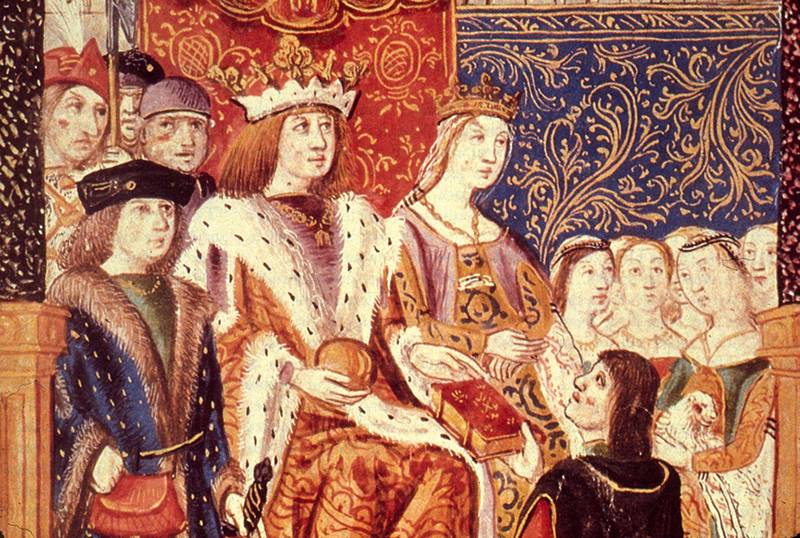
The wedding of King Aragon Ferdinand II and Queen of Castile Isabel I, two of Spain’s most influential Christian monarchs, took place at 1469. Although formally each of the spouses had rules in their territorial lot, only by coordinating their actions with each other, Spain took a huge step toward unification. The ruling couple had ambitious plans to unite the whole peninsula under their rule and the victorious completion of the centuries-old Reconquista. And it is abundantly clear that in the future that Ferdinand and Isabella represented for themselves, there was no place for the Granada emirate, which was becoming more and more like the anachronism of the long past era of Sid Campeador's glorious exploits.
The keenest interest in the final resolution of the Arab problem in Spain was the papal throne in Rome. Islam once again stood at the gates of Europe, this time Eastern. The Ottoman Empire, which was rapidly gaining strength, quickly made its way from a small tribal alliance to a great power, grinding the decrepit body of Byzantium, firmly established in the Balkans. The fall as a result of the brief siege of Constantinople in 1453 frightened the Christian world. And the final expulsion of the Moors from the Iberian Peninsula became already an interstate political task. In addition, the internal situation of Aragon and Castile left much to be desired, especially with regard to the economy. The Inquisition, which appeared in Spain since 1478, has already carried out its activities, the population has suffered from high taxes. War seemed the best way to break out the accumulated tension.
The Last Bastion of the Crescent
The southern region of Castile, Andalusia, directly bordered on Muslim lands. This region was in many respects the territory of an undeclared war, where both sides carried out raids and raids into the depths, disturbing neighbors and seizing trophies and prisoners. This did not prevent the official peaceful coexistence of the Christian kingdoms and the Granada Emirate. This fragment of the Islamic world experienced not only external but also internal stress. Neighborhood with implacable neighbors, the Catholic kingdoms, made war inevitable. In addition, by the end of the 14th century, the emirates of Granada had practically ceased to pay tribute to Castile, from which they were dependent on vassals, which already meant a challenge. The cities and fortresses of the emirate were constantly being strengthened, it had a disproportionately large army for its modest size. In order to keep such a military structure in proper combat capability, which was based on numerous Berber mercenaries from North Africa, the authorities constantly raised taxes. The highest echelons of the nobility represented by traditional family clans and representatives of noble families fought for power and influence at the court, which did not give the internal stability of the state. The situation was aggravated by numerous refugees from Christian lands, where persecution of Muslims intensified. The existence of the Granada Emirate under the conditions of the almost complete territorial domination of the Christian monarchies on the peninsula in the realities of the second half of the 15th century was already a challenge and was completely unacceptable.
Ferdinand and Isabella are completely moving away from the concept of the peaceful penetration of two cultures in favor of the complete destruction of Islam in Spain. Numerous and warlike nobles, whose whole generations served the Reconquista business, demanded the same thing, which had yearned for military campaigns, mining and victories.
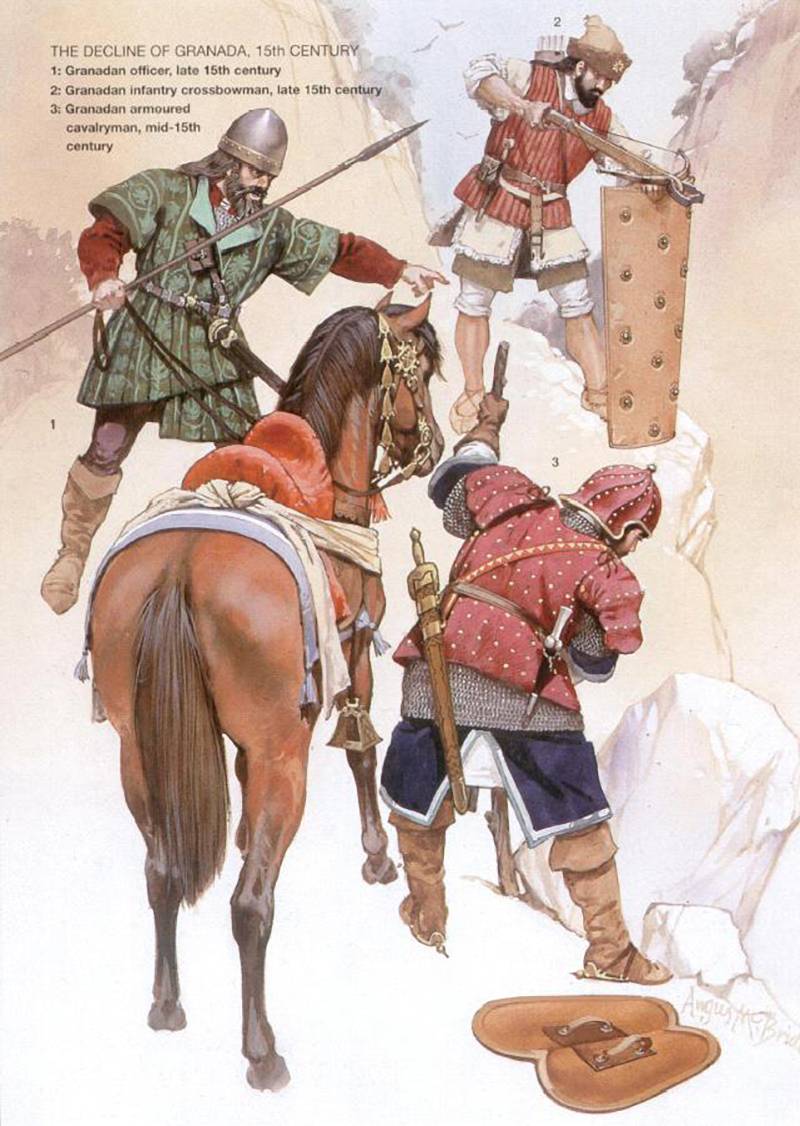
Despite the small size and limited internal resources, Granada remained a tough nut for the Christian side. The country had 13 large fortresses, which were largely fortified, however, this fact was leveled by the superiority of the Spaniards in artillery. The emirate’s army consisted of an armed militia, a small professional army, mainly cavalry, and numerous volunteers and mercenaries from North Africa. At the beginning of the 50th century, the Portuguese were able to seize a number of territories on the other side of Gibraltar, which made the influx of people wishing to fight in Moorish Spain much smaller. The emir also had a personal guard, consisting of young former Christians who converted to Islam. The total number of the Granadian Moorish army, the Christian side estimated at 7 thousand infantry and XNUMX thousand cavalry. However, the quality of this armed force was heterogeneous. For example, it was significantly inferior to the enemy in a firearm weapons.
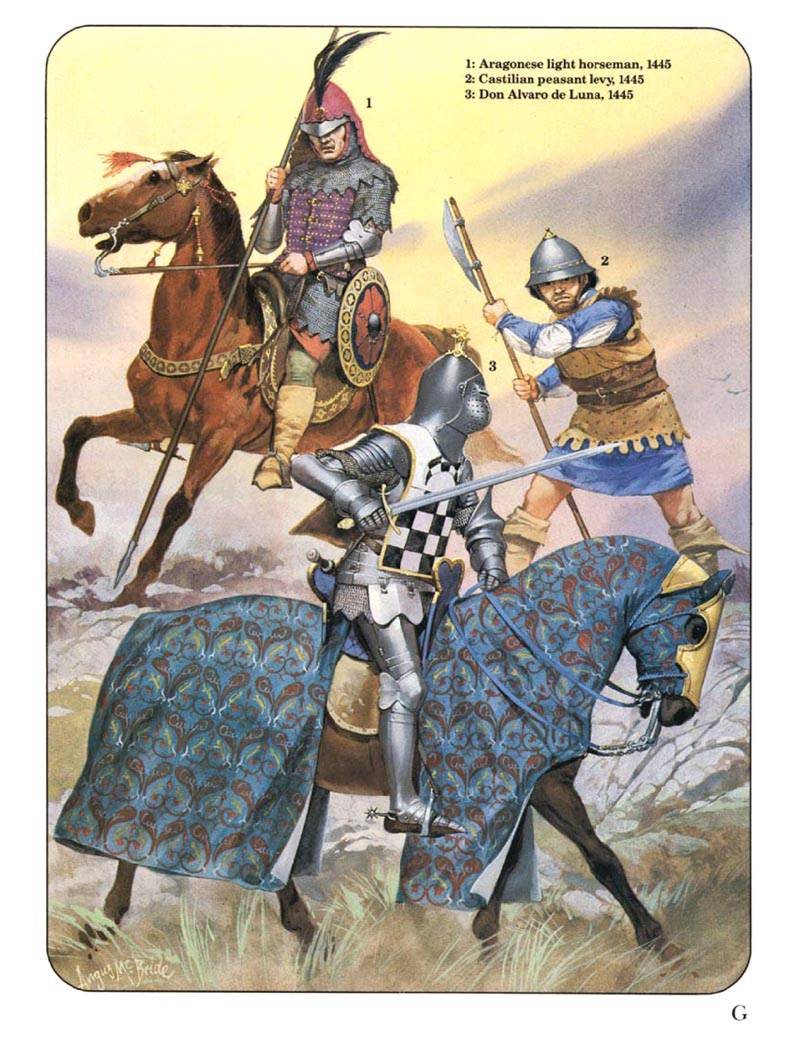
The basis of the united army of Ferdinand and Isabella was heavy knightly cavalry, consisting of noble grandees and their cavalry units. Individual bishops and knightly orders, such as the Order of Santiago, also put up armed contingents formed and equipped on personal initiative. The religious component of the war drew parallels with the 200 – 300 years old crusades and under the banner of Aragon and Castile attracted knights from other Christian states: England, Burgundy, and France. Since the Muslim population, as a rule, fled when the Christian army approached, taking all supplies with it, it was planned to solve logistics problems with the help of almost 80 thousand mules, unpretentious and enduring animals. In total, the Christian army had 25 thousand infantry (city militia and mercenaries), 14 thousand cavalry and 180 guns in its ranks.
Border Warm Up
Ferdinand and Isabella did not come to the implementation of the Granada project immediately. A few years after the wedding, the wife of the King of Aragon had to assert his rights to the throne of Castile with his niece Juana, the daughter of the deceased King Enrique IV. The struggle between Isabella, supported by Aragon, and the opposite side, which France and Portugal actively sympathized with, lasted from 1475 to 1479. During this time, the border areas between the Christian territories and the emirate lived their lives and were in constant motion. The raids on the territory of the neighbor alternated with short and unstable truces. Finally, Isabella managed to cope with a rival and move from solving domestic political problems to foreign policy objectives.
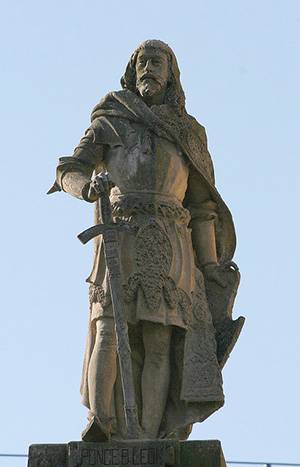
The next shaky truce signed in 1478 was interrupted in 1481. The troops of the Amir of Granada Abu al-Hassan Ali in response to the systematic raids of the Spaniards crossed the border and on the night of December 28 captured the Castilian border town of Saar. The garrison was taken by surprise, numerous prisoners were taken. Before this event, Granada once again confirmed the refusal to pay tribute to Castile. The reaction of the Spanish side was quite predictable. Two months later, a strong detachment under the command of Rodrigo Ponce de Leon, Marquis de Cadiz, consisting of several thousand infantry and cavalry troops, attacked and took control of the strategic importance of the Moorish fortress of Alham, overcoming the resistance of the small garrison. The complex of these events became the starting point of the Granada War.
Now the royal couple decided to support the initiative of their subjects - the actions of the Marquis of Cadiz were highly approved, and the Spanish garrison of Alhama received reinforcements. Attempts of the Emir to repel the fortress were not crowned with success. Ferdinand and Isabella decided to arrange a large-scale expedition against the city of Lohi, in order first of all to carry out a reliable communication by land with the garrison of Alhama. The Spanish army, which had left Cordoba under the command of King Ferdinand, arrived at Lohe 1 in July 1482. The area around the city was abundant in irrigation canals and was of little use for heavy Spanish cavalry operations. In addition, the royal troops housed in several fortified camps. Experienced in military affairs against the Arabs, the Andalus officers offered to stand closer to the walls of Lochy, but their plan was rejected by the command.
On the night of 5 July, the garrison commander Lohi Ali al-Atgar secretly from the enemy threw a cavalry detachment across the river, which was well disguised. In the morning, the main forces of the Arabs left the city, provoking the Spaniards to fight. In the Christian army the signal for an attack was immediately sounded, and the heavy cavalry rushed at the enemy. The Moors, not accepting the battle, began to retreat, their pursuers followed them in a fever. At this time, in advance, the sheltered Arabian cavalry unit struck at the Spanish camp, ravaging the wagon train and seizing numerous trophies. The attacking Christian cavalry, having learned what was going on in her camp, turned back. And at that moment Ali al-Atgar stopped his imaginary retreat and attacked himself. For several hours, a stubborn battle ensued, after which the Moors retreated beyond the walls of Lohi.
The day was clearly not set for His Majesty's army, and in the evening Ferdinand gathered a council of war, at which, taking into account the general fray, it was decided to retreat beyond the Frio and expect there reinforcements from Cordoba. At night, the withdrawal, which began in a more or less orderly fashion, turned into an unorganized flight, since reconnaissance patrols of the Mauritanian cavalry were naturally accepted by the Spaniards for whole hordes. Ferdinand had to stop the operation and return to Cordova. Failure under the walls of Lohi showed the Spaniards that they would have to deal with a very strong and skilled enemy, so that an easy and quick victory can be expected.
However, in Granada itself, there was no unity among the ruling elite, even in the face of the eternal enemy. Arriving in Lohu, Emir Abu al-Hassan was unpleasantly surprised by the news that his son Abu Abdullah rebelled against his father and proclaimed himself Emir Mohammed XII. He was supported by that part of the nobility, who wanted peaceful coexistence with Castile, observing above all economic interest. While Granada was shaken by internal unrest, the Spaniards made the next move. In March, the 1483 of the Grand Master of the Order of Santiago, Don Alfonso de Cardenas, decided to carry out a large-scale raid on the region adjacent to the main port of the Emirate of Malaga, where the weak garrison was located, and the likelihood of mastering large loot was high. The detachment, consisting mainly of cavalry, slowly moved through the mountainous terrain. The smoke from the ravaged villages signaled the garrison of Malaga, which in fact was much stronger than the Spaniards had thought about the approaching enemy.
The Spaniards were not ready for a full-scale battle with a serious enemy and were forced to retreat. In the dark they lost their way, got lost and in the mountain gorge were attacked by the Moors, who not only inflicted a serious defeat on them, but also took many prisoners. In an effort to win more supporters and contrast his own successes with the military glory of his father, the rebellious Muhammad XII in April 1483 led an almost 10 thousandth army and went to besiege the city of Lucena. During the fighting, he lost the best of his commanders - Ali al-Atgar, who distinguished himself under Loh, the army of the self-proclaimed emir was defeated, and Muhammad XII himself was captured. His father Abu al-Hassan only strengthened his position, and the authorities of Granada proclaimed the son of the emir a weapon in the hands of infidels.
However, the "infidels" had some plans for the disgraced and now captive emir's son. With him they began to carry out explanatory work: Muhammad was offered help in mastering the throne of Granada in exchange for vassal dependence on Castile. And the war continued in the meantime. In the spring of 1484, the Spanish army conducted a raid, this time successful, in the Malaga region, devastating its surroundings. The supply of troops was carried out with the help of ships. Within a month and a half, the royal army ravaged this rich region, causing great damage to it. Under the command of King Ferdinand, the Spaniards seized Allora in June 1484 - this was the successful end of a military expedition.
Fracture
At the beginning of 1485, King Ferdinand took his next step in the war — attacking the city of Ronda. The Mauritanian garrison of Ronda, believing that the enemy was concentrated near Malaga, carried out a raid on Spanish territory in the region of Medina-Sidonia. Returning to Ronda, the Moors discovered that the city was besieged by a large Christian army and fired upon by artillery. The garrison could not make it to the city, and 22 May Ronda fell. Capturing this important point allowed Ferdinand and Isabella to take control of much of western Granada.
Disasters for Muslims this year did not end: Emir Abu al-Hassan died of a heart attack, and the throne was now in the hands of his younger brother, Az-Zahal, a gifted commander who had now become Mohammed XIII. He managed to stop the advance of the Spaniards in several directions, to put in order his own army. But the position of Granada, surrounded on all sides by the enemy, remained extremely difficult. The royal couple introduced into the game the stored and repainted figure of Mohammed XII, freeing him from captivity. Realizing the perniciousness of the way he was on, the old new contender for the emir's throne was now ready to become a vassal of Castile and get the title of duke - in exchange for a war with his own uncle and support for the actions of Ferdinand and Isabella. 15 September 1486 at the head of his supporters Mohammed XII stormed into Granada - street fighting began between them and the garrison of the capital.
On the night of April 6 1487 in Cordoba an earthquake occurred, which was perceived by the Spanish army preparing for the campaign as a good sign symbolizing the imminent fall of Granada. The next day, the army led by Ferdinand advanced towards the well-fortified city of Veles-Malaga, the capture of which would open the way to Malaga, the main port of the Granada Emirate. Attempts by Mohammed XIII to prevent the movement of the enemy, burdened with heavy artillery, did not lead to success. 23 on April 1487. The Spaniards began shelling the city, and on the same day the news came that the garrison of Granada swore allegiance to Mohammed XII. Demoralized defenders soon surrendered Veles-Malaga, and 2 May King Ferdinand triumphantly entered the city.
The uncle of the new ruler of Granada was now supported only by a few cities, including Malaga, to the walls of which the Spanish army arrived on May 7 of the year 1487. A long siege began. The city was heavily fortified, and its garrison under the command of Hamad al-Tagri was determined to fight to the end. Food supplies in Malaga were not designed for a large number of refugees who had accumulated there. Everything was eaten in the city, at least to some extent possible, including dogs and mules. Finally 18 August Malaga capitulated. Enraged by the stubborn defense of the enemy, Ferdinand entered with his prisoners extremely cruel. Most of the population was sold into slavery, many soldiers of the garrison were sent as "gifts" to the courts of other Christian monarchs. Former Christians who converted to Islam were burned alive.
The fall of Malaga placed the entire western part of the emirate in the hands of the royal couple, but the rebellious Mohammed XIII still held some rich regions, including the cities of Almeria, Guadix and Basu. The emir himself, with a strong garrison, took refuge in the latter. In the 1489 campaign, Ferdinand led his large army to Basho and launched a siege. This process was so long that it had an impact not only on the economy of Castile, but also on the morale of the army. The use of artillery against a well-fortified fortress turned out to be ineffective, military spending was constantly growing. Queen Isabella personally arrived at the camp of the besiegers in order to support the fighting soldiers with her personal presence. Finally, after six months of the siege, in December 1489, Basa fell. The capitulation conditions were largely generous and the situation that developed after the fall of Malaga was not observed. Mohammed XIII recognized the authority of the Christian monarchs, and in return was endowed with the consolation title of the “king” of the Alhaurin and Andaras valleys. Now Granada, which had been reduced in size and lost access to the sea, was under the control of the actual vassal of the Christian kings, Mohammed XII, who liked what was happening less and less.
The Fall of Granada
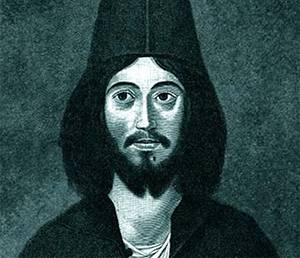
With the removal of Mohammed XIII from the game, the likelihood of an early end to the war became apparent. Ferdinand and Isabella hoped that their protege, who had now become the emir of Granada, would, from their point of view, show prudence and surrender this city into the hands of Christians, being content with the consoling title of the duke. However, Mohammed XII felt deprived - after all, Ferdinand promised to transfer some cities under his authority, including those under the control of the tamed uncle. The Emir could not understand that once he embarked on the path of cooperation with the enemy and having paid for his own ambitions with the interests of his own country, sooner or later he would lose everything.
Realizing that he was trapped in his own hands, and not counting on the mercy of powerful allies and enemies who remained as enemies, the emir began to seek support from other Muslim states. However, neither the Sultan of Egypt, An-Nasir Muhammad, nor the rulers of the North African states came to the aid of Granada, deprived of access to the sea. Egypt was in anticipation of war with the Turks, and Castile and Aragon were the enemies of the Ottomans, and quarreling with the Mamluk sultan with Ferdinand and Isabella was not at hand. North Africa generally sold wheat to Castile and was not interested in the war.
Serious passions were running around the emir. His mother Fatima and nobles insisted on further resistance. Inspired by support, the emir recalled his vassal oath and declared himself the leader of the Moorish resistance. In June of 1490, he launched an almost hopeless campaign against Aragon and Castile. The hostilities began with devastating raids into Spanish territories. Ferdinand did not strike once, but began to strengthen the border fortresses, awaiting the arrival of reinforcements. Although the emir of Granada still had a large army, time worked against him. The resources and capabilities of the opposing sides were no longer comparable. Although the Moors managed to repel several locks from the enemy, they could not carry out the main thing: to resume control over the coastline.
Winter 1490 – 1491 passed in mutual preparations. Having collected a large army, Ferdinand and Isabella in April 1491 began the siege of Granada. An impressive and well-fortified military camp was set up on the banks of the river Genil. Understanding the hopelessness of the situation, the Grand Vizier of Mohammed XII persuaded his ruler to surrender and bargain for his generous terms of surrender. However, the emir did not consider it expedient at this stage to negotiate with the enemy, who would still deceive. The siege turned into a tight blockade of the city - the Moors, provoking the Spaniards to go on the assault, deliberately kept some of the gates open. Their soldiers approached the positions of the Christians and involved the knights in fights. When losses as a result of such events reached impressive numbers, King Ferdinand personally banned fights. The moors continued to carry out attacks, also losing people and horses.
During the siege, the chroniclers noted a number of bright episodes. Among the Mauritanian warriors, a certain Tarfe stood out with his strength and courage. Once he managed to break into the Spanish camp at full gallop and stick his spear next to the royal tent. A message to Queen Isabella of more than piquant content was tied to the pole. The guard of the king rushed in pursuit, but the moor managed to escape. Such an insult could not be left unanswered, and the young knight Fernando Perez de Pulgara, with fifteen volunteers, managed to penetrate Granada through a poorly guarded passage and nailed a parchment to the door of the mosque with the words “Ave Maria”.
18 June 1491. Queen Isabella wished to look at the famed Alhambra. A large equestrian escort led by the Marquis de Cádiz and the King himself accompanied Isabella to the village of La Zubia, from which a beautiful view of Granada opened. Noticing a large number of standards, the besieged took it as a challenge, and pulled their cavalry out of the gate. Among them was the joker Tarfe, who tied that very parchment with the words “Ave Maria” to the tail of his horse. It was too much, and the knight Fernando Perez de Pulgara asked the king to give permission to answer the call. In a duel Tarfe was killed. Ferdinand ordered his cavalry not to succumb to the provocations of the enemy and not to attack, but when the enemy guns opened fire, the Marquis de Cadiz, at the head of his squad, rushed at the enemy. The moors mixed up, were overturned and suffered great losses.
A month later, a large fire destroyed most of the Spanish camp, but the emir did not take advantage of the opportunity and did not attack. With the onset of cold weather, in order to avoid precedents, Ferdinand ordered the construction of a stone camp west of Granada. It was completed in October and received the name Santa Fe. Seeing that the enemies are full of the most serious intentions and will besiege the city to the last, Mohammed XII decided to negotiate. At first they were secret, because the emir was seriously afraid of hostile actions on the part of his entourage, who could accuse him of treason.
The terms of delivery were agreed on November 22 and were fairly mild. The war and the long siege caused great damage to the economy of Aragon and Castile, besides winter was approaching, and the Spaniards feared epidemics. Muslims were allowed to practice Islam and send services, the emir was given control of the mountainous and restless terrain of Alpujarras. The agreement was hidden for some time from the inhabitants of Granada - the emir was seriously afraid of reprisals against his person. 1 January 1492. He sent notable hostages to the Spanish camp 500. The next day, Granada surrendered, and four days later, the king and queen, at the head of a huge festive procession, entered the defeated city. The royal standards were raised above the Alhambra, and a cross was solemnly hoisted instead of a dropped crescent. The seven hundred year old Reconquista is over.
The emir handed over the keys to Granada to the winners and set off for his micro-kingdom. According to legend, he sobbed, leaving the city. Fatima’s mother, who was riding nearby, responded strictly to these lamentations: “She doesn’t make sobs, like a woman, over what you could not protect, like a man.” In 1493, having sold his possessions to the Spanish crown, the former emir left for Algeria. There he died in 1533. And in the history of Spain a new, no less magnificent page was opened. Indeed, in the tail of a long solemn procession, a still unknown, but extremely stubborn and persistent native of Genoa, Cristobal Colon, walked modestly, whose energy and conviction in their rightness earned the sympathy of Queen Isabella herself. It will take a little time, and in August of the same year to meet the unknown will go into the ocean flotilla of three ships. But this is a completely different story.
Information